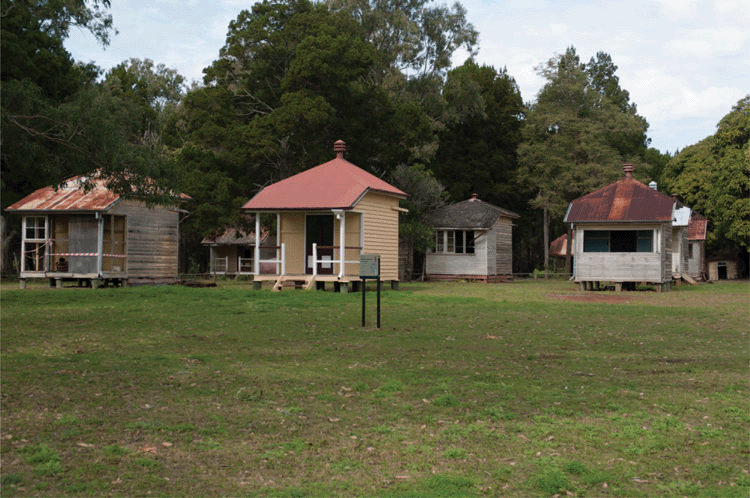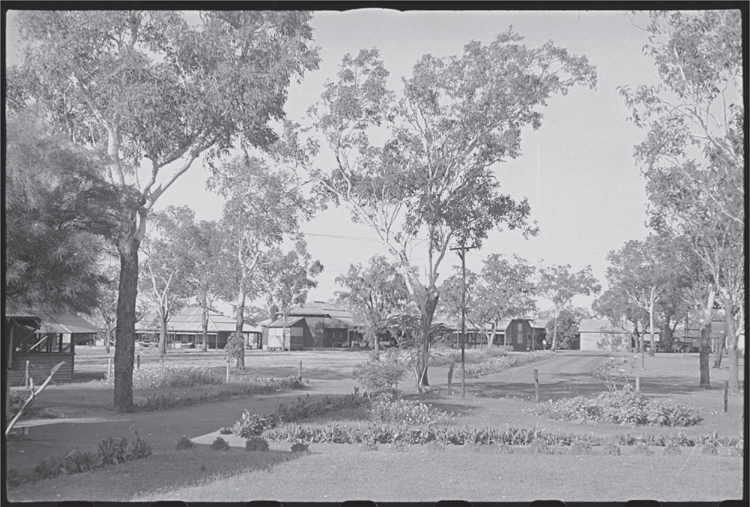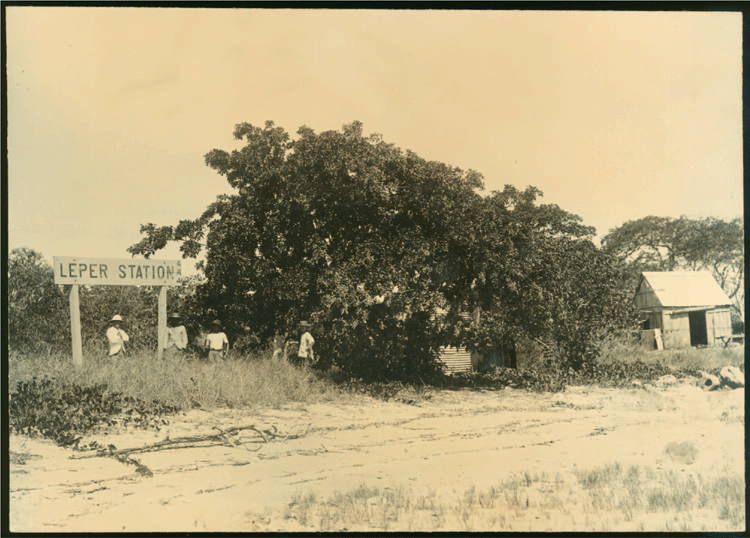Stigma, separation, sorrow: leprosy in Australia
Jenny DavisMicrobiology Australia 41(4) 187-191 https://doi.org/10.1071/MA20051
Published: 22 October 2020
Abstract
Leprosy (Hansen’s disease) was introduced to Australia in the mid-1800s and its story reflects the attitudes of the 19th and 20th centuries, with treatment including segregation, paternalism, and racism. The approaches taken within the Australian states were similar and based on isolating people affected by leprosy, as both a measure to assist the patient but, more importantly, to protect the European society. The most devastating effects of this introduced disease and these approaches were on Indigenous Australians. With the advent of effective antimicrobials, isolation practices were slowly replaced with community-based treatment. However, the term ‘leper’ still evokes negative images in Australian society today.
Introduction
Leprosy (Hansen’s disease), a treatable disease affecting peripheral nerves, skin and mucous surfaces, is caused by Mycobacterium leprae and Mycobacterium lepromatosis1. As a clinical illness, it only manifests in a small percentage of people who come in contact with infectious patients; however, immunological tests show that most such contacts process the organism without developing clinical symptoms or signs2. The disfigurement caused by the disease has traditionally incited fear of those diseased and has led to exclusion and stigma.
Early records
Following European colonisation, the earliest records of leprosy in Australia date from the 1850s, with no evidence of its presence among Indigenous Australians before this time3–5. The disease pattern varied between the colonies. In Victoria, Chinese immigrants on the goldfields were the earliest reported cases, but the disease did not become established in the European settlers. However, in New South Wales and Queensland, early epidemiological studies suggested that the disease spread to Europeans from both Chinese immigrants and South Sea Islanders brought to Australia as indentured labour3–5. Leprosy was introduced in the northern areas of Western Australia during the 1880s, with the probable sources being Chinese labourers or lugger crews (originating from endemic countries) in the pearling industry6. By 1890, leprosy had been reported in the Northern Territory, presumed to have been introduced by Chinese immigrants working on railway construction and in mines4,7. The earliest cases of leprosy in South Australia and Tasmania were reported in the mid-20th century and notifications remained low in these states8. In the early years, leprosy was difficult to diagnose, and records were incomplete and not accurate4.
Quarantine and isolation
In the late 19th century, all Australian states enacted Public Health Acts and all states except Tasmania included leprosy in these Acts or in succeeding legislation specific for leprosy4. Quarantine stations were established at this time, to protect the population from infectious exotic diseases, including leprosy. The fear associated with the disease meant that facilities for people affected by leprosy were sited away from existing quarantine station buildings or were constructed on islands, removed from centres of population.
In New South Wales, The Coast Hospital, Little Bay, Sydney, replaced the North Head Quarantine Station in 1881. Chinese leprosy-affected patients were initially housed in huts, with a lazaret replacing an isolation ward in 1890. A contemporary report describes the lazaret’s surroundings in glowing terms and the inmates as contented9.
In Victoria, the 1897 description of the ‘leper camp’ some distance from the Point Nepean Quarantine Station was less flattering, with the leprosy-affected inmates ‘calmly awaiting the end of their misery … with philosophical resignation’10. In the 1930s, those remaining were moved to Coode Island, Melbourne11,12. In the 1940s, when definitive treatment became available, leprosy-affected persons were sent to the Exotic Diseases Hospital, a stand-alone institution originally built to house sufferers of such diseases as typhus and smallpox, situated next to the Queen’s Memorial Infectious Diseases Hospital, Fairfield (M. Sandland, pers. comm.).
In Queensland, Peel Island Quarantine Station (Figure 1) in Moreton Bay was the successor in 1907 to lazarets at Dayman Island and Friday island in the Torres Strait (for non- Europeans) and Stradbroke Island in Moreton Bay (for Europeans). Peel Island housed both Indigenous Australians and Europeans, but in 1940 the Indigenous Australians were transferred to a separate facility at Fantome Island, North Queensland13.

|
In Western Australia, early isolation facilities were at Woodman Point and Wooroloo Sanatorium in the south, and Bezout Island, Derby, Cossack and Beagle Bay in the north. In the 1930s, Indigenous Australians affected by leprosy were transported to Channel Island, Darwin, Northern Territory. After years of delay and argument between local communities and Government officials, Derby Leprosarium (Figure 2) was opened in 19366.

|
In the Northern Territory (part of South Australia until 1911) the ‘leprosy station’ on Mud Island, Darwin (functioning from 1884) (Figure 3) was described as a ‘living hell lazaret’14. The choice of Channel Island as a replacement in 1931 was only marginally better, with scarce water and fuel supplies and inadequate medical care. It was only in 1955 that a leprosarium was built on the mainland at East Arm7.

|
In South Australia, the Torrens Island Quarantine Station, established in 1877, records three persons with leprosy admitted to the hospital between 1944 and 196815.
In Tasmania, the Quarantine Station on Bruny Island (1884–1955) does not appear to have hosted any people affected by leprosy16.
Indefinite detention challenged
In the interwar years of the 20th century, lifetime segregation of leprosy-affected people was challenged by EH Molesworth and Leonard Rogers17. Molesworth, an Australian leprologist, sharply criticised the inhumanity of this practice18. Rogers, drawing on international experience, argued that indefinite isolation was ineffective because those in the early stages of the disease would not come forward for treatment if threatened with incarceration and because medical practitioners would be reluctant to expose their patients to such a fate. Patients segregated with advanced disease would not benefit from the treatment offered to them (injected chaulmoogra and hydnocarpus oils, reported to arrest symptoms if administered in the early stages), and those with early symptoms would remain in the community, able to spread leprosy to their (untraced) contacts19. However, CE Cook (Chief Medical Officer of the Northern Territory) and Raphael Cilento (Director-General of Health, Queensland) both opposed these arguments and argued persuasively for isolation. Their views prevailed and indefinite detention practices continued13,17.
Indigenous Australians
The earliest cases in Indigenous Australians were reported in the 1890s; by the 1920s, these notifications outnumbered all others4. Unlike Europeans, Indigenous Australians did not traditionally fear leprosy and did not reject those who were affected17. However, in the first half of the 20th century, the leprosy control strategies of State and Commonwealth Governments dictated that all cases should be identified and placed in isolation. Rounded up in police-assisted ‘leprosy raids’ in Queensland13, or by ‘leprosy patrols’ in northern Western Australia6, becoming a ‘leper suspect’ transported in chains in the Northern Territory17, facing lifelong separation from their communities and removal of babies at birth13 – it was entirely reasonable that Indigenous Australians would make every effort to flee and hide from authorities, or escape from custody. If unsuccessful, they were kept in prison-like conditions, with the prospect of painful injections of chaulmoogra oil and poorly funded, inadequate facilities17. A telling statistic in 1940 is the allowance per patient on Fantome Island (£100 per annum), compared with the European patient on the Peel Island Lazaret (£1000 per annum)13.
The first really effective treatment for leprosy, sulphone therapy, was available in Australia in194720. In 1953, the first report of the World Health Organization (WHO) Expert Committee on Leprosy called for a reconsideration of compulsory isolation practices21. Australia did not change its policies through the 1950s, although treated patients could then be released from isolation under certain conditions, which included access to medical care, separate accommodation, and no domiciliary contact with children. These conditions automatically excluded most Indigenous Australians, with prevailing attitudes being expressed in this 1952 description by Dr AH Humphry, Commonwealth Department of Health, Darwin: ‘his standard of hygiene is poor, he will not sleep apart, nor can he restrain his intense fondness for children.’20,22.
In the late 1950s, European patients in Queensland and Western Australia were beginning to move from Peel Island and Wooroloo to hospital and then home isolation20. Yet the facilities for Indigenous Australians did not close until the 1970s (Fantome Island) or the 1980s (Derby, East Arm), with many Fantome Island patients simply transferred to Palm Island. This treatment reflected both official attitudes (that Indigenous Australians were irresponsible with their health) and structural shortfalls in Government health and welfare services for Indigenous Australians20.
Leprosy in Australia today
Triple antibiotic therapy (dapsone, rifampicin and clofazimine) was introduced in the 1980s, and the treatment of leprosy changed to outpatient consultation and monitoring of antimicrobial therapy and any adverse reactions. Responsibilities for leprosy diagnosis and treatment shifted to specific infectious diseases hospitals (e.g. Fairfield Infectious Diseases Hospital, Melbourne) or to major hospitals. Leprosy-affected persons today are treated in outpatient clinics, unless there is a clinical indication for hospitalisation, such as planned corrective surgery or treatment of immune reactions (M. Sandland, pers. comm.). Since 1925, leprosy notifications have had peaks in 1940, 1944 and 1957 (dominated by Western Australia and the Northern Territory numbers), with occasional reports today, predominantly in those from endemic countries8,23,24.
From the harrowing descriptions in 1867 of Victorian Chinese immigrants with a ‘loathsome disease’11 to the appropriate outpatient treatment in the Northern Territory today25,26, it is clear that Australian approaches to leprosy have undergone radical improvement. Nevertheless, within Australian society in 2020, the term ‘leper colony’ is still used as a description of shame and isolation27, an attitude that reflects the ignorance, paternalism and racism in our all too recent past.
Conflicts of interest
The author declares no conflicts of interest.
| The term ‘leper’ is offensive to persons affected by leprosy and is only used in this article where historically appropriate. The terms ‘leper colony/station’, ‘lazaret’ and ‘leprosarium’ all broadly refer to areas set aside for the segregation of persons affected by leprosy, with the term ‘leprosarium’ indicating a more medical approach to isolation. Derby Leprosarium is now known as Bungarun, but its previous name is used in this article. |
Acknowledgements
Dr Murray Sandland (Infectious Diseases Specialist, Fairfield Infectious Diseases Hospital, 1966–1996), Dr Nathan Zweck (Disease Control, Department of Health and Community Services, Northern Territory, 2000–2005) and Dr Jeanette Hyland (leprosy educator and researcher in Nepal, and for Global Project on the History of Leprosy) provided valuable information and helpful advice. This research did not receive any specific funding.
References
[1] Scollard, D.M. (2016) Infection with Mycobacterium lepromatosis. Am. J. Trop. Med. Hyg. 95, 500–501.| Infection with Mycobacterium lepromatosis.Crossref | GoogleScholarGoogle Scholar | 27430540PubMed |
[2] Godal, T. and Negassi, K. (1973) Subclinical infection in leprosy. BMJ 3, 557–559.
| Subclinical infection in leprosy.Crossref | GoogleScholarGoogle Scholar | 4580217PubMed |
[3] Thompson, J.A. (1897) A contribution to the history of leprosy in Australia. In Prize Essays on Subjects Connected with Leprosy. The New Sydenham Society, London. pp. 12–109, MacMillan & Co. (London).
[4] Cumpston, J.H.L. (1989) Leprosy. In Health and Disease in Australia; a History (Lewis, M.J., ed), pp. 207–219, Australian Government Publishing Service.
[5] Cook, C.E. (1927) Leprosy in Australia. A general summary of the Australian position in respect of its epidemiology and control. In Report of the Federal Health Council of Australia First Session, Appendix III. pp. 17–27, Government of the Commonwealth of Australia.
[6] Davidson, W.S. (1978) Havens of Refuge. A History of Leprosy in Western Australia. University of Western Australia Press for the Public Health Department.
[7] Saunders, S. (1989) ‘A Suitable Island Site’: Leprosy in the Northern Territory and the Channel Island Leprosarium 1880–1955. Historical Society of the Northern Territory.
[8] Australian Government Department of Health (2003) Notifiable diseases surveillance, 1917–1991. https://www1.health.gov.au/internet/main/publishing.nsf/Content/cda-pubs-annlrpt-oz_dis19_91.htm-copy3
[9] Prince Henry Hospital Nursing and Medical Museum (1881–1899) Leprosy. https://princehenryhospitalmuseum.org/leprosy/
[10] Anonymous (By Our Own Correspondent) (1897) Life in Quarantine. The Argus (Melbourne, Vic) 23 February, 6.
[11] Welch, I. (2016) Chinese and Leprosy in 19th Century Victoria. (Self-published.)
[12] Anonymous (1937) Leper at Coode Island. The Argus (Melbourne, Vic) 3 June, 11.
[13] Parsons, M. (2010) Defining disease, segregating race: Sir Raphael Cilento, Aboriginal health and leprosy management in twentieth century Queensland. Aborig. Hist. 34, 85–114.
[14] Anonymous (1927) Living Hell Lazaret. The Northern Standard (Darwin, NT) 17 June, 1.
[15] National Archives of Australia (NAA) (1923–1970) Register of admission and discharge – Torrens Island Quarantine Station hospital D2305. 1, 24, 27, 46.
[16] Duncombe, K. (2004) Bruny Island’s Quarantine Station in War and Peace. (Self-published.)
[17] Saunders, S. (1990) Isolation: the development of leprosy prophylaxis in Australia Aborig. Hist. 14, 168–181.
[18] Anonymous (1926) The case against the Lazaret. The Bulletin 7 October, 11.
[19] Rogers, L. (1930) When will Australia adopt modern prophylactic measures against leprosy? Med. J. Aust. 2, 525–527.
| When will Australia adopt modern prophylactic measures against leprosy?Crossref | GoogleScholarGoogle Scholar |
[20] Robson, C. (2016) Ending isolation? Leprosy, welfare and Indigenous Australians 1950–86. Aborig. Hist. 40, 65–88.
| Ending isolation? Leprosy, welfare and Indigenous Australians 1950–86.Crossref | GoogleScholarGoogle Scholar |
[21] World Health Organization Expert Committee on Leprosy (1953) First report. World Health Organization Technical Report Series Number 71, 8–12.
[22] Humphry, A.H. (1952) Leprosy among full-blooded Aborigines of the Northern Territory. Med. J. Aust. 1, 570–573.
| Leprosy among full-blooded Aborigines of the Northern Territory.Crossref | GoogleScholarGoogle Scholar | 14928889PubMed |
[23] Australian Government Department of Health (2020) National Notifiable Diseases Surveillance System. http://www9.health.gov.au/cda/source/rpt_4.cfm
[24] Hempenstall, A. et al. (2019) Leprosy in Far North Queensland: almost gone, but not to be forgotten. Med. J. Aust. 211, 182–183.
| Leprosy in Far North Queensland: almost gone, but not to be forgotten.Crossref | GoogleScholarGoogle Scholar | 31231806PubMed |
[25] Lush, D. et al. (1998) Leprosy control in the Northern Territory. Aust. N. Z. J. Public Health 22, 709–713.
| Leprosy control in the Northern Territory.Crossref | GoogleScholarGoogle Scholar | 9848969PubMed |
[26] Northern Territory Government Department of Health (2018) Guidelines for the control of leprosy in the Northern Territory (Fourth edition). Centre for Disease Control, Department of Health, Northern Territory. https://hdl.handle.net/10137/526
[27] Sky News (2020) The whole of Australia is treating Victoria like ‘a pariah and a leper colony’. Australian News Channel Pty Ltd 30 June. https://www.skynews.com.au/details/_6168201283001
Biography
Jenny Davis is a retired microbiologist, with a background in public health bacteriology, and a passion for bacterial identification. She served on the National and International Boards of The Leprosy Mission. Her current interests are Australian local science history and community radio.


